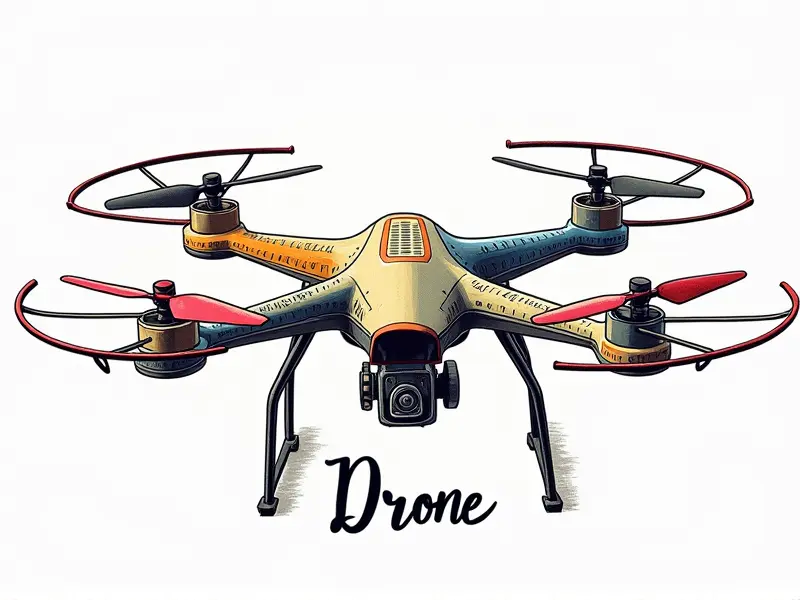RC helicopter charging tips?

RC Helicopter Charging Tips: Best Practices for Optimal Performance
Operating an RC (Radio Controlled) helicopter is a thrilling hobby that requires careful maintenance to ensure peak performance. One of the most critical aspects of maintaining your RC helo is proper charging of its batteries. This article will guide you through best practices, common mistakes, and tips to optimize your battery's lifespan and flight time.
Best Practices for RC Helo Charging
Charging your RC helicopter battery correctly can significantly impact its performance and longevity. Here are some essential guidelines:
- Select the Right Charger: Use a charger specifically designed for LiPo (Lithium Polymer) batteries, which is common in RC helicopters.
- Charge at Room Temperature: Charging your battery in an environment with stable room temperature ensures optimal charging efficiency and safety.
- Avoid Fast Charging: While fast chargers are convenient, they can shorten the life of your batteries. Opt for a balance charger that charges each cell individually to prevent overcharging.
Maximize Battery Life in RC Helis
To maximize the lifespan of your RC helicopter battery, follow these tips:
- Monitor Voltage Levels: Keep track of your battery's voltage before and after each flight to ensure it remains within a safe range.
- Avoid Deep Discharge: Never let the battery discharge completely. Aim for 20-30% remaining charge when you land.
- Store Properly: Store your batteries in a cool, dry place away from flammable materials and direct sunlight.
Avoid Overcharging Your RC Helicopter Batteries
Overcharging can lead to battery swelling, reduced capacity, and even fire hazards. Here’s how to prevent it:
- Use a Balancer Charger: A balancer charger monitors each cell individually, preventing overcharging.
- Limited Charging Cycles: Limit the number of charge cycles per day and avoid charging immediately after discharging.
- Monitor Temperature: Overheating is a sign that your battery may be overcharged. Allow it to cool before continuing use.
Extend Flight Time with Proper Charging
To get the most out of each flight, follow these steps for efficient charging:
- Select High-Quality Batteries: Invest in reputable brands that offer longer cycle life and higher capacity.
- Charge Before Storage: Charge your battery to 50% before storing it long-term to prevent self-discharge.
- Use a Battery Management System (BMS): A BMS can monitor and regulate the charging process, ensuring optimal performance.
RC Helicopter Battery Care 101
Maintaining your RC helicopter battery is crucial for its longevity. Here are some basic care tips:
- Inspect Regularly: Check for signs of damage, swelling, or leaks before each use.
- Safely Store Batteries: Keep them in a fireproof container and away from flammable materials.
- Follow Manufacturer Guidelines: Always adhere to the manufacturer’s recommendations regarding charging rates and storage conditions.
Common Mistakes When Charging RC Helicopters
Avoid these common pitfalls to prevent damage to your battery:
- Charging in Extreme Temperatures: Avoid charging batteries in very hot or cold environments, as it can degrade the battery’s performance.
- Ignoring Voltage Levels: Regularly check and record voltage levels to ensure they remain within safe limits.
- Overlooking Battery Age: Older batteries may require more frequent monitoring and shorter charge cycles.
Optimize Your RC Helicopter's Charge
To optimize your battery’s performance, consider the following strategies:
- Select Appropriate Charging Rate: Choose a charger that matches the recommended charging rate for your specific battery type.
- Leverage Smart Chargers: Use smart chargers with built-in safety features and monitoring capabilities.
- Monitor Battery Health: Regularly assess the condition of your batteries to identify potential issues early on.
Maintain Optimal Voltage for RC Helis
Voltage management is crucial for maintaining optimal performance. Here’s how to do it right:
- Check Voltage Before Flight: Ensure your battery has enough charge before taking off.
- Avoid Overdischarge: Land with 20-30% of the battery remaining to prevent overdischarge and damage.
- Monitor During Use: Keep an eye on voltage levels during flight to avoid sudden drops in power.
Charge Smart, Fly Longer
To extend your RC helicopter’s operational time, adhere to these guidelines:
- Select High-Capacity Batteries: Use batteries with higher capacity ratings for longer flight times.
- Avoid Frequent Charging Cycles: Limit the number of charge cycles per day to preserve battery life.
- Incorporate Breaks Between Flights: Allow your battery time to cool down between flights, especially in hot weather conditions.
Maintain RC Helicopter Battery Health
Maintaining the health of your RC helicopter’s battery is essential for consistent performance. Here are some tips:
- Regular Inspection: Inspect batteries regularly for signs of wear or damage.
- Use Quality Chargers: Invest in high-quality chargers designed specifically for LiPo batteries.
- Avoid Overuse: Limit the number of flights and charge cycles to prevent premature battery degradation.
Optimize Charge Cycles for RC Helis
To optimize your battery’s charge cycles, follow these practices:
- Limit Daily Charging: Avoid charging the same battery multiple times a day to extend its lifespan.
- Leverage Smart Technology: Use chargers with smart features that monitor and regulate the charging process.
- Avoid Deep Discharge: Land your RC helicopter before reaching a deep discharge state, typically around 20-30% remaining charge.
By following these guidelines, you can ensure optimal performance and longevity for your RC helicopter’s battery. Proper care and maintenance will not only extend the life of your batteries but also enhance your flying experience with consistent power and reliability.

